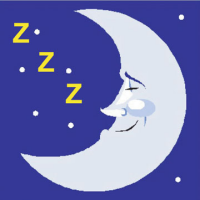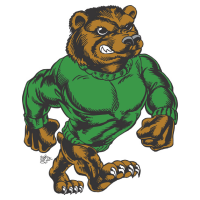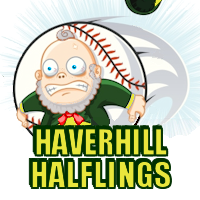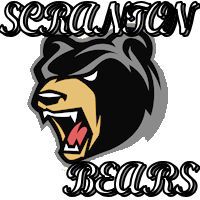Game Date: Apr 3rd, 2064
Discussion Forum
Forum >> Discussions >> Tips for a solid rebuild 
 |
|  |
| 
| Post ID | Date & Time | Game Date | Function |
|---|---|---|---|
| #19373 | 05/25/2015 7:39:38 am | ||
|
DoDo Joined: 05/20/2015 Posts: 46 Inactive 
| Hi everyone, I'm new to BB. Now, I'm asking for some tips from anyone to a solid rebuild. My team's finances are okay. | ||
| #19374 | 05/25/2015 8:22:54 am | ||
|
Haselrig Joined: 04/13/2014 Posts: 2790 Novi Doubledays III.4 
| Hey DoDo. Looking at your roster, I'd say you've already done most of the work of cleaning out expensive, old (31+ year old) guys. Now it's a matter of finding targets for the reopening of free agency. You likely won't get the majority of players you claim, so cast your net wide. Throw a claim on anybody that is reasonably young and is, even a marginal, improvement over whoever you have now. Pay particular attention to minor league aged guys. Ideally, you'd want to stock all four levels of your minors (Rookie - AAA) with talented players ASAP and then proceed to upgrade them whenever possible with your own draft picks or high potential waiver claims. Usually those sorts of plans don't go through without a hitch, so be prepared for some setbacks. The main thing is to be patient and do a little scouting of free agents every day. Welcome to BB and good luck o/ |
||
| #19440 | 05/27/2015 8:38:42 am | ||
|
Seca Joined: 05/05/2014 Posts: 5197 Waterloo Dinosaurs Legends 
| Welcome. I didn't study your team. These are general thoughts that may or may not apply to your situation. Apologize for the wordy post. Just skimming through for the tips might be better use of your time. It is pretty common to inherit a team in need of a major rebuild. Your team may not have been cared for in a while, and probably has a number of older players. These guys are often past their peak and kind of expensive. As Haselrig said, replacing these guys with younger, cheaper players heading into their prime is the main objective. Tip #1 - Seen the movie Logan's Run? Get rid of old, low skill, expensive players. The quickest route to team improvement is through defense. If your team has been under computer management for a while, you probably have a very sub-optimal defense. You may have bad defensive players. You may have players in positions that do not suit their skill set. Tip #2 - look at each position player on your roster and decide what his "best" position is. If the player is young (<26) consider training the player at his best position. The defensive contributions of your SS, 2B and CF are very important. To the extent that you can use poor offensive players at these positions. The benefit of their defense will outweigh the cost of their offense. These 3 guys should have very high range, and moderately high fielding. The quality of your pitching has the greatest impact on how you do. Pitching though, is the most difficult area to improve. Like real life, the number of great pitching prospects is limited and quality pitching is in high demand. While you may have luck improving pitching through free agency, I personally had much more success developing my own pitching. This can be a painful process, as these guys aren't always very effective as they are building up their skills. Tip #3 - consolidate the pain. If you find some position players that need to learn new positions, and some pitching prospects that could develop - do it all at once. Expect to have a horrible season as everything possible goes wrong. And then be amazed the next season at how much better your team plays. (My own team had a 100 loss season during our rebuild year, and won league the next). You acquire players through waivers and free agency. Human managers release players during the week. Computer managers release players Thursday night. Checking the available players sometime on Friday is valuable. Tip #4 - on Fridays, pay particular attention to players aged 23-27 who were released by computer managers for being "Too old for the minors." There are a lot of "Too old for minors" gems that appear. These guys often aren't highly contested due to their age / requiring some work. They are perfect for a rebuilding team. Different managers will have different preferences for skills. But consensus is that (in general) hitting is the most important offensive skill, and range is the most important defensive skill. For pitchers, many managers will tell you to stay away from low control pitchers. Good advice, though I think its ok to have 1 ... maybe 2 of these guys on a pitching staff. They are easier to acquire due to lower competition. Tip #5 - have a role in mind for players you acquire. There is no value in signing a good 3B prospect if you already have 5 good 3B prospects in your system. Especially if that means you have no SS prospects. Some redundancy is good, but its important to have a plan. Tip #6 - draft College for a while. As you fill your minor league system, I think you will find its much easier finding prospects for Rookie and A ball than it is finding prospects for AA or AAA. If you focus on College draft picks, they will fill the AA ranks. These guys may only be a season away from joining the big squad. Best of luck! |
||
| #19453 | 05/27/2015 6:44:28 pm | ||
|
FurySK Joined: 02/07/2015 Posts: 299 Inactive 
|
I do not have enough experience to really tell you what to do beyond that. My promotion hinged on me finding one really good SS that could overachieve (Darnel Bush) and then finding guys that could hit for extra bases, but i'm sure there is going to be more going up that i need to put together. Updated Wednesday, May 27 2015 @ 6:45:29 pm PDT |
||
| #19476 | 05/28/2015 4:02:44 pm | ||
|
Brewnoe Joined: 03/25/2014 Posts: 816 Fall River Naughty Dawgs IV.5 
| My thoughts and examples 1) Ask if you care about about your team's overall history or if you're going to forget everything before you took over. I went slash and burn on everyone with age/salary, now when I look at my team's all-time leader's (the little crown at the bottom of the team stats page) I wish I had kept Roberto Huerta and Ryan Brooks for at least a little longer 2) Think long-term when you train people at new positions. Skills-wise, Juan Navarrete looked like my best CF option when I started playing him there. I can't complain about what he's done in CF, but I really should have "Biggio'ed" him and put him at 2B. 3) Take advantage of the off season and scout the double hockey sticks out of the market and don't rely on "potential" Far and away, my best first day pickups were both 12-pots ... Downtown + Shadow Knight 4) Look again for those "too old for minors" Need an example? Try Javier Saenez |
||
| #19482 | 05/28/2015 6:00:36 pm | ||
|
jackiscind Joined: 12/06/2013 Posts: 16 Fort Wayne Bears VI.13 
| Here are two players that are turning my team around. They both have 12 potential. Never overlook 12 potential players. They can be a centerpiece in rebuilding. http://brokenbat.org/player/75453 http://brokenbat.org/player/72939 Updated Thursday, May 28 2015 @ 6:01:12 pm PDT |
||
| #19483 | 05/28/2015 7:29:16 pm | ||
|
Rock777 Joined: 09/21/2014 Posts: 9591 Haverhill Halflings III.1 
| 12 POT guys will last you, but you can find some really good short term gems in the 11 POT pool too. I had a couple 11 POT guys that lasted me up into LL-4. Both the 12 POT and to an even greater extent 11 POT player pools are highly overlooked because most folks just filter for high POT players when looking at waivers and free agency. I'd hit the 12 POT market hard, but keep an eye on some good 11 POT guys or veterans to fill in holes. For veterans POT is less important than past performance. Updated Thursday, May 28 2015 @ 7:30:51 pm PDT |
||
| #19527 | 05/29/2015 2:25:26 pm | ||
|
DoDo Joined: 05/20/2015 Posts: 46 Inactive 
| Thanks for all these great tips. | ||
| #19562 | 05/30/2015 4:38:29 pm | ||
|
buffmckagan Joined: 12/22/2013 Posts: 651 Scranton Bears Legends 
| Similar question that has been somewhat discussed already - do you think it is worth, at the beginning of the season, seeing what the game suggests when making roster moves? I have been around for a while but I believe I could always learn more to be successful and a team should always have the mentality of rebuilding in order to be the best it can be. For example, I have a player, Eduardo Pena, who has been one of the most offensively prolific players in my team's history, but he is going to be 34 and probably need a bigger check than his competition. However, he has made it clear he can still produce at a high level, despite his declining skills and growing salary, and he may be worth bringing back for one last year. However, the talent I have been looking at has finally come of age to join the major league squad as my outfield has players who I think are finally ready to become everyday players. I also have three second basemen (one I have been playing at first, one at second, one as a role player who frequently comes off the bench as a PH or to replace the injury-prone catcher), and I want to cut at least one of them, if not two. Would seeing what the game automatically suggests be the best way for my problems (unless some of you want to give your $0.02 come the end of the season)? Updated Saturday, May 30 2015 @ 4:40:06 pm PDT Updated Saturday, May 30 2015 @ 4:40:35 pm PDT |
||
| #19571 | 05/30/2015 10:14:33 pm | ||
|
Dcmrulz Joined: 02/14/2013 Posts: 588 Inactive 
| What I have done in a situation where there's an old great coming in was... If I know my team was on the decline, I bottomed out, shipped out the older player as the younger player got ready. If the position is thin on Majors-ready players, I'll sign some cheap majors ready talent, while the youngsters grow. |
||